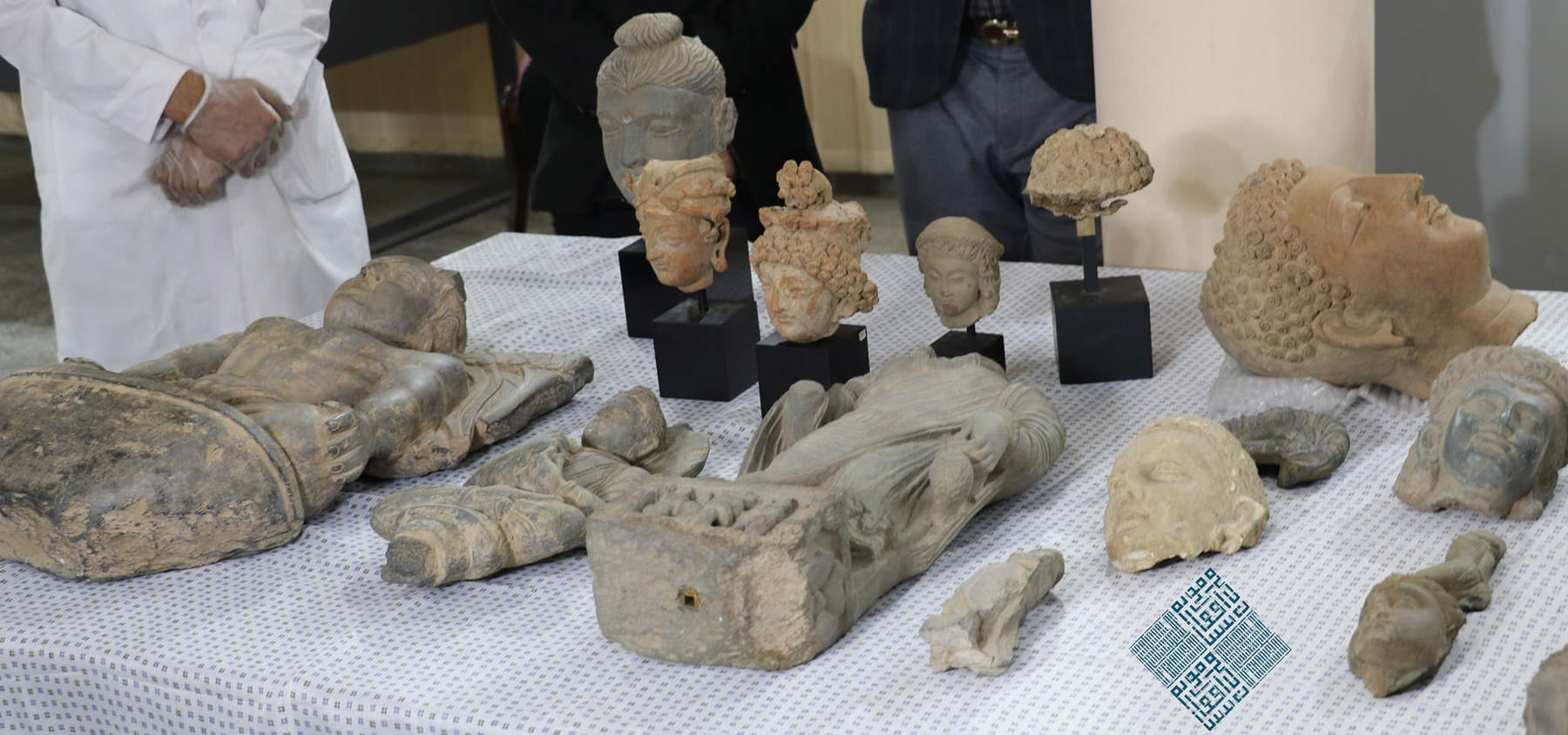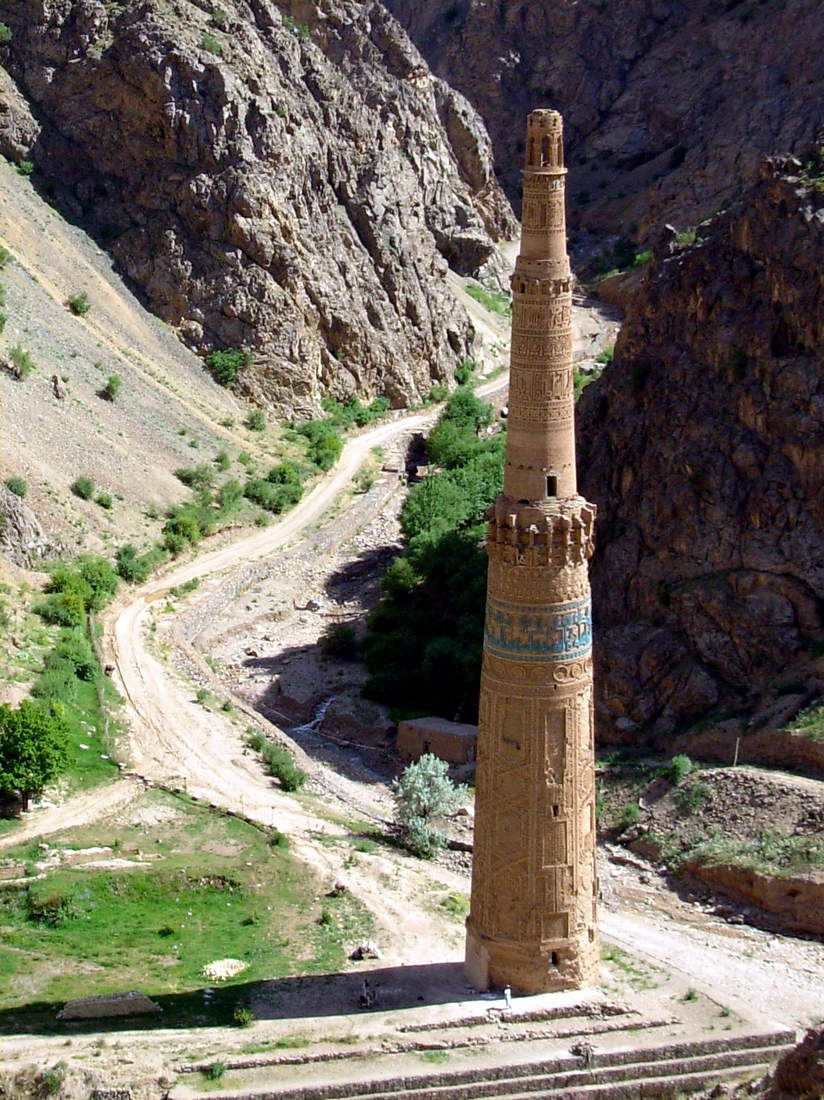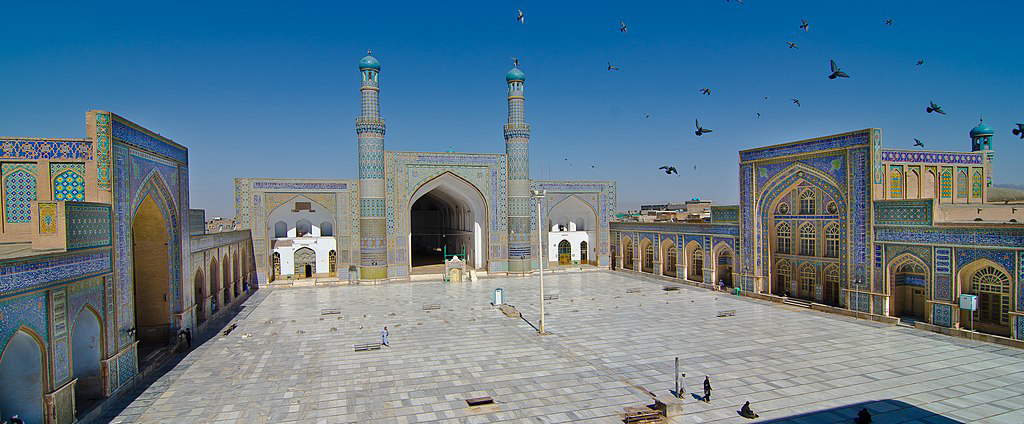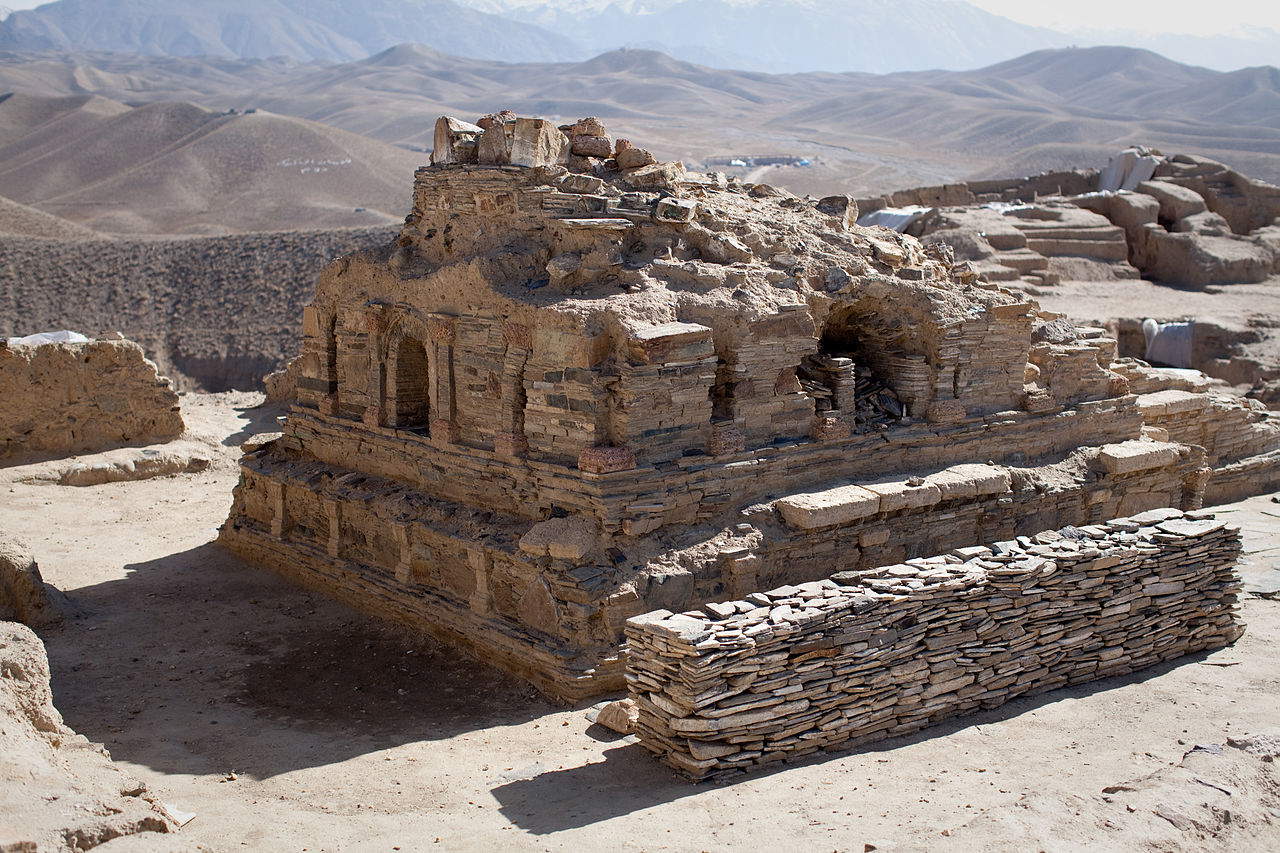The Taliban are back in power in Afghanistan after 20 years: it was 2001 when the fundamentalist regime was brought down after the U.S. intervention in support of the Northern Alliance was able to retake Kabul in November of that year. Last August 15, 20 years later, the Taliban recaptured the country’s capital, and there are many fears in the world of culture about what might happen to the country’s cultural heritage, since in the past the Taliban have been capable of looting (often with the aim of selling works and artifacts on the black market, as happens in many war scenarios) and destruction, the latter culminating in the demolition of famous Bamiyan Buddhas, the great Buddhist monuments from the 6th century that were torn down at gunpoint and with explosives.
At the moment, all international organizations active on the cultural heritage protection front are closely monitoring the situation in Afghanistan to see what the developments might be. There is much concern, not least because the fate of the country’s cultural property is uncertain, nor is it known at the moment how credible are the promises made by the regime, which today, after the first press conference held by the top leadership of the Taliban’s newly established Islamic emirate, let slip the image of a more moderate force than the one of two decades ago.
 |
| Afghan high school students during a workshop at the National Museum in Kabul (June 2021). Photo: National Museum of Afghanistan |
 |
| The National Museum of Afghanistan |
 |
| Finds and objects from Afghanistan and sold on the black market returned by the United States to the National Museum of Kabul in April 2021. Photo: National Museum of Afghanistan |
Last August 13, National Geographic probed the ground with an article that gathered the opinions of some experts active in the field. The rapid conquest by the Taliban (who had not yet arrived in Kabul at that date anyway) surprised Afghan curators and archaeologists, who had been securing the works and artifacts in protected locations for days anyway, given the uncertainty of the situation, although not everywhere was the operation successful, as the rout of the Afghan army and the collapse of Asraf Ghani ’s government were much faster than expected. The magazine contacted Noor Agha Noori, head of the Institute of Archaeology of Afghanistan in Kabul, and Mohammad Fahim Rahimi, director of the National Museum of Afghanistan, also based in Kabul: both reported being in contact with colleagues in Taliban-occupied cities, and so far it appears that all are safe. Noori and Rahimi also said that the Taliban had allowed workers at cultural institutes in the occupied cities to continue their duties, but because they were confined to their homes, no information could be obtained on the status of collections and archaeological sites.
“If they have bad intentions, it will become obvious as they go along,” Cheryl Benard, who heads the Washington-based Alliance for the Restoration of Cultural Heritage, told National Geographic.At the moment, cultural heritage does not seem to be a priority of the Taliban. “The situation,” Philippe Marquis, director of the French archaeological delegation to Afghanistan, said instead, “is unpredictable. People in Kabul are very afraid of the Taliban.”
The biggest concerns are for the vast collection of the National Museum, Afghanistan’s first museum, which was founded in 2019 and holds a collection of about 800,000 objects. Last Aug. 15, the very day the Taliban entered Kabul, the institute issued a statement through its Facebook page stating that “in several areas of the city, looters and traffickers raided private and public property. However, the museum staff, its objects and property are safe, but the continuation of this chaotic situation brings great concern for the safety of the museum’s objects and property and its employees. So, the National Museum of Afghanistan calls on the security forces, the international community, the Taliban and other influential parties to pay attention to the security of the objects and not to let profiteers exploit this situation to damage and loot the objects and assets of this institution.” The Kabul museum had already been subjected to looting in the 1990s, and it is therefore desired to prevent history from repeating itself.
Afghanistan is a country rich in culture: in addition to the two sites included in the UNESCO World Heritage List, namely the Bamiyan Valley landscape and the Jam ruins, one can count the entire city of Herat, considered a kind of Florence of the East as well as the heart of Afghan culture, and then the city of Balkh, the complex of Gawhar Shah, the remains of the Buddhist monastery of Mes Aynak, the Museum of Islamic Art in Ghazni, the Greek-Battrian site of Hadda (the latter already heavily damaged during the last war) and much more. A heritage that has already been heavily tested by decades of war and cannot afford any more devastation.
 |
| The Buddha of greater Bamiyan before destruction. Photo by Françoise Foliot |
 |
| The minaret of Jam. Photo by David Adamec (2006) |
 |
| The Great Mosque in Herat. Photo by Didier Tais (2011) |
The first organization to take a position on the situation in Afghanistan was the International Council of Museums (ICOM ), which issued a note yesterday saying it was “particularly alarmed by the threats faced by the civilian population and the men and women of Afghanistan who dedicate their lives to protecting the rich and diverse cultural heritage of this historic nation.” ICOM, the note goes on to say, “expects that all authorities in Afghanistan will continue to respect the integrity of museums, their collections and heritage sites, as well as the heritage professionals who hold and safeguard this rich tangible and intangible heritage entrusted to all Afghan people regardless of ethnicity , gender or political opinion. In addition, we expect the authorities to continue to comply with their international obligations to protect heritage as a State Party to the 1954 Hague Convention for the Protection of Cultural Property and its Protocols, and the 1970 UNESCO Convention on the Means of Prohibiting and Preventing the Illicit Import, Export and Transfer of Ownership of Cultural Property.”
“Observing the events of recent days,” the note continues, “ICOM recalls the painful challenges the Afghan people have faced in recent decades to protect their past. Many men and women trying to protect Afghanistan’s cultural heritage have risked their lives in doing so; criminal organizations have profited from the sale of looted and illegally excavated Afghan cultural property; and heritage sites have been irreversibly damaged. During these terrible crises, ICOM, along with many other international organizations, has stood by the side of the Afghan people to protect their heritage from all threats. In the 1990s, ICOM hosted seminars to highlight the looted heritage of museums, and in the 2000s ICOM published a Red List of Cultural Objects at Risk for Afghanistan. Efforts by ICOM and the museum community to combat the illicit trafficking of cultural property from Afghanistan and to raise awareness continue to be visible. ICOM is currently working closely with its international partners and actors in the region and monitoring the situation as it evolves. We will continue to offer whatever support we can to alleviate any potential threats that Afghanistan’s legacy may face in the uncertain days and weeks ahead.”
Russia’s Tass news agency reached a spokesman forUNESCO, Thomas Mallard, who reported that “UNESCO is closely monitoring developments in Afghanistan and coordinating its actions with partner agencies within the United Nations system to ensure the safety and security of personnel. The rich and diverse heritage on the territory of Afghanistan is of exceptional value to humanity. And this heritage must be preserved.”
 |
| Mes Aynak Buddhist Temple. Photo by James Starkey (2011) |
 |
| The mausoleum of Gawhar Shah. Photo by Marius Arnesen (2009) |
The few times the Taliban have spoken recently on the issue of cultural property protection, they have used reassuring tones. The concern in Afghanistan is not of recent days: it rose above the alert level when the U.S. military began to leave the country under the Trump administration. And in February, according to what National Geographic still reported three months later, the Taliban issued a statement (“surprising” according to the American magazine) in which they claimed to have instructed members of the group in order to “robustly protect, monitor and presevare” cultural property, stop illegal excavations and save “all historical sites.” In addition, also in February, the Taliban prohibited the sale of items on the black market: “No one should disturb these sites or think of using them to make a profit,” the statement quoted by the magazine read again. Still National Geographic, however, gave an account of Noor Agha Noori’s concerns that there was evidence that the fundamentalists were still engaged in looting activities to generate profits. Noori was echoed by Rahimi: “Unfortunately,” he said at the time, “the statement is not clear, especially regarding the pre-Islamic heritage. We know very well what happened to the [Kabul National Museum] collection during the civil war and in 2001.”
That the Taliban does not want to damage the heritage was also confirmed yesterday by the Russian daily Moskovsky Komsomolets, one of the most widely circulated in the country, which reported a Taliban spokesman who again on August 16 assured that “Buddhist sites in Afghanistan are not at risk.” Indeed, there are those who look with a veil of optimism at the Taliban’s statements: respect for cultural heritage may in fact be one of the keys to any peace treaty and to not deteriorating the regime’s position in the eyes of the international community.
Nasratullah Hewadwall, spokesman for the Kabul branch of the Alliance for the Restoration of Cultural Heritage, told National Geographic that the signals sent by the Taliban represent “an important and positive step.” Hewadwall again pointed out that, last year, the Taliban repudiated the 2001 destruction of the Bamiyan Buddhas, and that they understood how cultural heritage can be, at the very least, a resource for attracting international tourism when the situation in the country has stabilized, and how deliberate destruction of cultural property can be extremely damaging in terms of international relations. There is, however, at the moment the chaos factor to take into account, especially in the rural areas of the country, where 80 percent of the Afghan population lives and where controls on cultural property, even assuming the Taliban really want to make an effort to preserve it, may be less tight. For now, in short, the situation is one of great uncertainty. And there are those who remain pessimistic, such as Omar Sharifi, a professor of social sciences at the American University in Afghanistan, who left Kabul yesterday in the direction of Delhi, telling National Geographic that he had received threats from the Taliban. “They have cleaned up their image, but they still remain a very ideologized and radical group.” However, it is still too early to know what will become of Afghanistan’s cultural heritage in the coming weeks and months.
Warning: the translation into English of the original Italian article was created using automatic tools. We undertake to review all articles, but we do not guarantee the total absence of inaccuracies in the translation due to the program. You can find the original by clicking on the ITA button. If you find any mistake,please contact us.